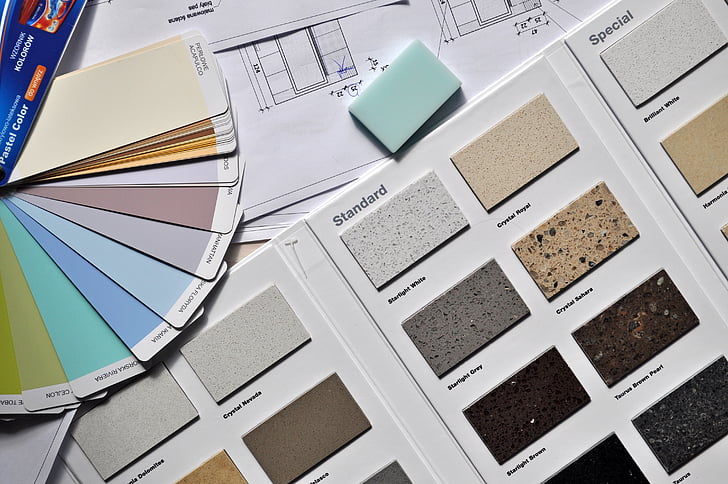2 Key Vocabulary in Interior Design

Delving into the realm of interior design means engaging with a tapestry of terminology that paints the intricacies of the profession. At its core, interior design is the art of curating spaces to resonate with the inhabitants’ sensibilities and requirements. The interior designer is the maestro, harmonizing aesthetics with functionality. Their canvas ranges from personal sanctuaries under residential interior design to bustling hubs of daily life, known as commercial interior design. For budding designers, a resume forms the initial brushstroke in their career, often enhanced by experiences from internships or job shadowing. Their oeuvre is showcased through work samples or artifacts, encapsulated within both digital and hard copy portfolios. The masterpiece, however, emerges from a systematic interior design process – a journey from the preliminary pre-design discussions to the conclusive move-in & post occupancy evaluations. This process ensures that the final space embodies the initial vision outlined in the client program, evolving through phases like programming, schematic design, design development, and realized through contract documents and contract administration. Understanding these terms is your first step into the vibrant world of interior design.
Key Terms:
- Interior Design: The creation of interior environments that support the function, aesthetics, and cultures of those who inhabit, live, and thrive in interior spaces.
- Interior Designer: A multi-faceted professional who uses creative and technical solutions applied within a structure to achieve a built interior environment.
- Residential Interior Design: Involves the planning and design of private dwellings to reflect the client’s tastes, preferences, and functional needs.
- Commercial Interior Design: Involves the planning and design of primarily public spaces. Includes places where you eat, work, play, recover health and heal from medical conditions, exercise, meditate, or enjoy life.
- Resume: A brief summary of a person’s education, skills, work experience, activities, and interests.
- Internship: An educational work experience for credit that allows the student to investigate different areas of the interior design field, learn the culture of various firms, and understand how academic preparation corresponds to the practice of design.
- Job Shadowing: Spending time with a person at work and learning by watching as he or she performs the functions of the job.
- Work Samples/Artifacts: Photographs, floor-plan drawings, free-hand sketches, or conceptual models of work that you have done. Will be used in a portfolio to showcase your work to future clients.
- Digital Copy Portfolio: A digital copy of a collection of work samples of a person’s best work, often used when applying for a job to show a person’s abilities and accomplishments.
- Hard Copy Portfolio: A paper copy of a collection of work samples of a person’s best work, often used when applying for a job to show a person’s abilities and accomplishments.
- Interior Design Process: A method that interior designers use for organizing their work, guiding their actions, and finalizing their decisions when working with team members and clients. Although the phases of the process are linear, it is not unusual for a designer to revisit them several times as a client changes his or her mind or a design is further refined.
- Pre-Design: Takes place before the interior design process begins. Designer interviews the client and asks questions to understand the client’s needs. If the designer’s skills match and the client agrees a contract is signed so the interior design process can begin.
- Programming: Phase 1 of the interior design process. The designer clearly identifies the client’s design problem, current situation, and future needs. Involves fact-finding, client interviews, on-site analysis of the project, and creation of the client program. By the end, the designer should fully understand the needs of the project in detail and the client should verify accuracy before the designer proceeds to the next phase.
- Client Program: A document that outlines the client project functions, specific need requirements in each space, issues, and current status. Becomes a checklist-type document that helps the designer understand the client’s situation and needs, and ensures the inclusion of every requirement in the final design solution.
- Schematic Design: Phase 2 of the interior design process. A brainstorming or “what-if” phase that is creative and innovative. The designer explores and generates multiple ideas and multiple-design solutions based on the client program. The designer uses schematics- quick drawings to help envision floor plants, spaces, and more. Includes concept development, preliminary space planning, drawings, furniture, fixtures, and equipment, and budget projection. By the end of this phase the designer will have explored multiple design solutions and will provide the client with enough information to be able to select a proposed solution.
- Design Development: Phase 3 of the interior design process. The refinement of designs and decisions the designer and client made. Phase of critical analysis, problem-solving, and creativity. The phase includes floor plan revisions, evaluation of systems details, refinement of material and furnishings, development of interior architectural detailing, refinement of budget, and client sign-offs.
- Contract Documents: Phase 4 of the interior design process. Involves preparing formal documents for the construction and installation of the design. These documents are legally binding documents. Continue with the refinement of budget, development of working drawings, specification book, bidding with the contractor, and client approvals.
- Contract Administration: Phase 5 of the interior design process. The design comes to life. Designer schedules and monitors construction work and costs.
- Move-In & Post Occupancy: Phase 6 of the interior design process. Designers set a move-in date and schedule furniture and equipment delivery. The designer needs to assess the client’s satisfaction.